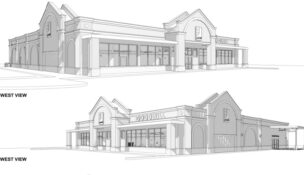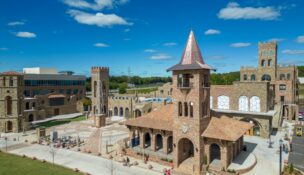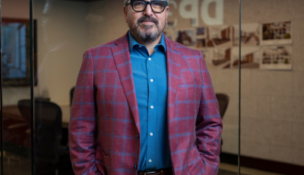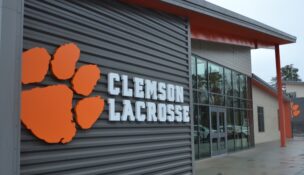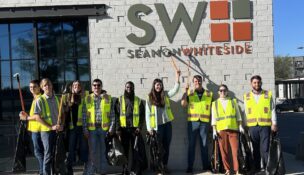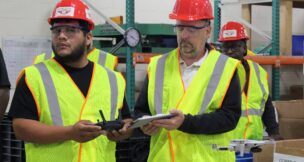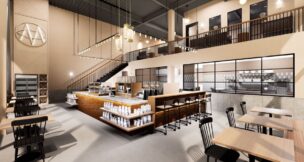Unity Park plans move forward
Molly Hulsey //December 15, 2020//
COVID-19 brought budget cuts and a hit of more than $53 million per month to Greenville’s hospitality economy, the financial well for the city’s 60-acre Unity Park project, this summer.
In June, $250,000 was reallocated from the project’s fund to aid imperiled businesses with 250 grants of $1,000 each.
Still, Greenville’s Mayor Knox White remained hopeful.
He admitted some succeeding phases of the park project might be postponed, but they will not be canceled. And despite the freeze on construction projects after March, he predicted landscaping and site preparation projects will be finished right on time.
“We have a bunch of infrastructure and construction under way right now if you go on the site — it’s a big construction site — that’s not stopping,” White told GSA Business Report in early summer. “But in terms of what we do next on Unity Park depends on how we feel about the hospitality tax.”
Hospitality tax changes or no, $38 million approved for Harper General Contractors in June helped seal that deal for the park’s first phase, due for completion in Spring 2022.
This means a new parking lot off Welborne Street, a new visitor’s center, trails, a pedestrian bridge and a nine-acre lawn dubbed Michelin Green after the company’s $1 million donation last year. Harper’s team is also slated to sculpt a playground from mounds of earth and a “sprayground” from waterspouts installed in the sidewalk, according to Mike Murphy, public works director of the city of Greenville.
According to Neil Wilson, project manager with Harper General Contractors, the team has demolished the previous visitor center and is set to break ground on the new design, complete with a welcome center and assembly area, in January. A pedestrian bridge spanning the river known as Auro Bridge, site grading and Michelin Green are currently underway.
Murphy echoed that Harper’s team was almost 80% complete with the parking lot with hopes that it would be complete in 60 days.
Some of the company’s first steps with the project also includes moving the Reedy River itself.
On Dec. 15, they also hope to make the Reedy even more formidable by broadening the river, cutting down what he calls “trash trees,” or non-native species, and bank stabilization.
“Which is going to be the crown jewel of the park project itself: the river,” said Murphy.
Going with the flow
“What we’re doing is re-establishing a more natural bank stabilization,” Wilson said. “Currently what is stabilizing the bank of the Reedy in this section are primarily invasive species, so we’re removing those and going back in with a bolder bank stabilization detail and planting native vegetation and native trees along the riverbank to establish a more natural riparian area that will be more beneficial to native wildlife.”
The park has often been touted as a prototype for future capital projects that take into account environmental impacts, and he added that the city and the project’s landscape design team from MKSK are taking an extra effort to blend the aesthetic of the park with the natural habitat. For every tree removed, two or three must be planted, according to Murphy. Most will be healthy, aesthetically pleasing indigenous species.
Reforestation included, even the preparations for widening the river have been no easy feat.
“It’s definitely a major effort, as you can imagine,” Murphy said, adding that the expansion of the river will also prompt work on a detour for the Swamp Rabbit Trail up Mayberry Street and over to Willard Street. The detour will remain during the reconstruction of the river and construction of the new portion of the Swamp Rabbit Trail, which he calls “an incredible addition and upgrade to the park.”
And so far, despite delays prompted by COVID-19 and tropical storms, Harper and the city have been keeping up the pace while discovering new ways to streamline the budget along the way.
Molehills out of mountains
“We definitely went through a very rigorous value engineering phase of the project with the contractor — Harper is our contractor and MKSK is our architect,” Murphy said. “So, as a result of that, we were able to save a substantial amount of money by getting creative with the project.”
New developments haven’t changed the overall appearance or design of the project, he said, but they just helped streamline the plans by several million dollars.
Initial designs for the visitor’s center brought up the price tag to $6 million but the team’s redesign and contract vetting brought it back down to $2.3 million, said Murphy. Harper’s open bidding process further whittled expected prices down and brought in a new paver to the park.
Harper had built Himalayas of soil after breaking ground on Phase I over the summer. The ponderous dirt mounds posed one of the most significant questions of the project so far: how and where on earth could the team move all this soil cheaply?
Taking it to a landfill would cost “thousands of thousands of dollars” and worker hours, but it seemed like the only option left until they discovered that Greenville County’s contractors were on the quest for soil to use in a trail project north of the park.
Greenville County’s public works office jumped at the chance to carve into Unity Park’s stockpile on Mayberry Street.
“It was an incredible accomplishment in the early, early phases,” Murphy said. “It’s very rare that … in the beginning phases of a two-year project, that we would be able to find a way to save such a substantial amount of money on the project already.”
This story originally appeared in the Dec. 14 print edition of the GSA Business Report.
r





